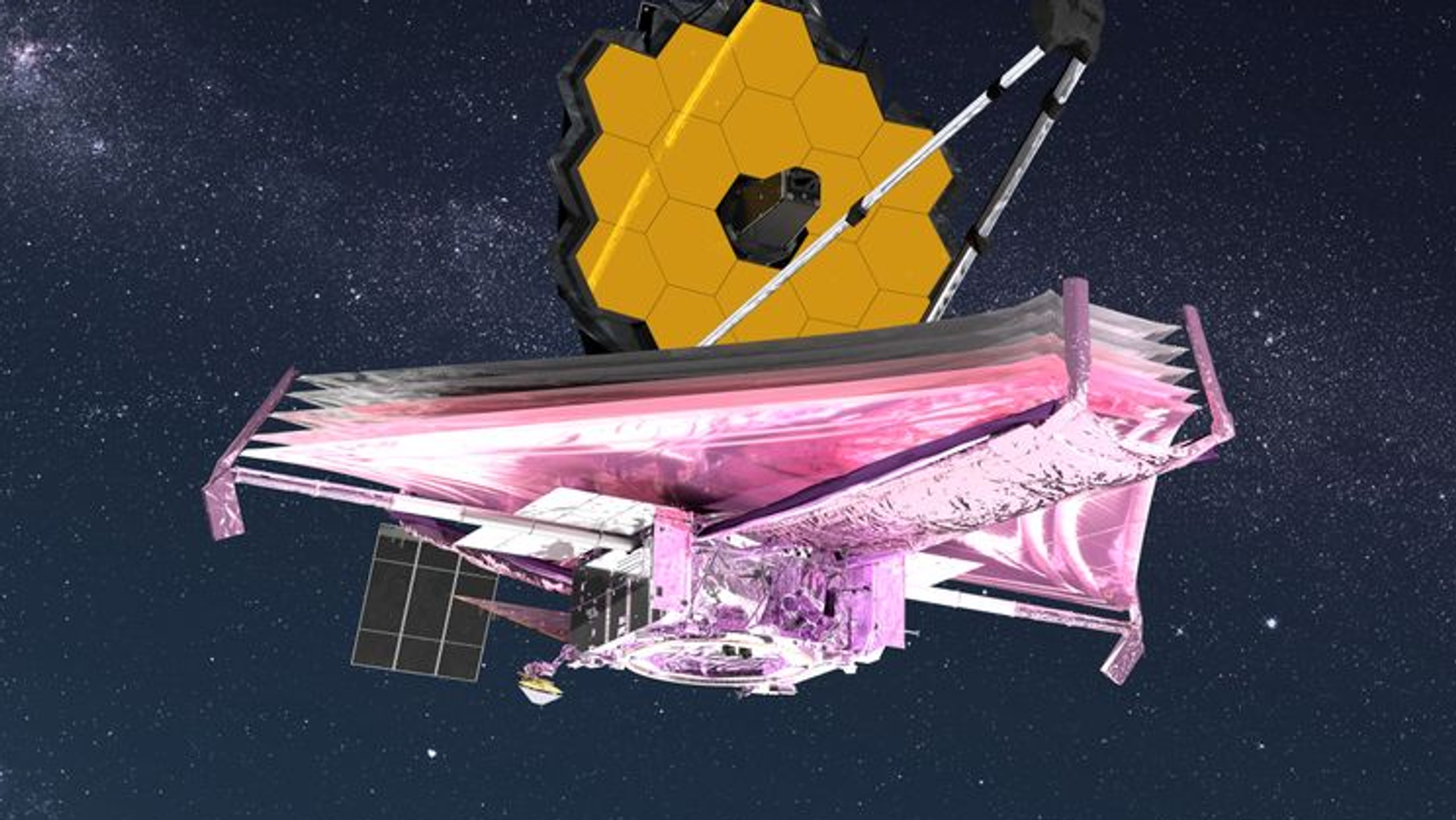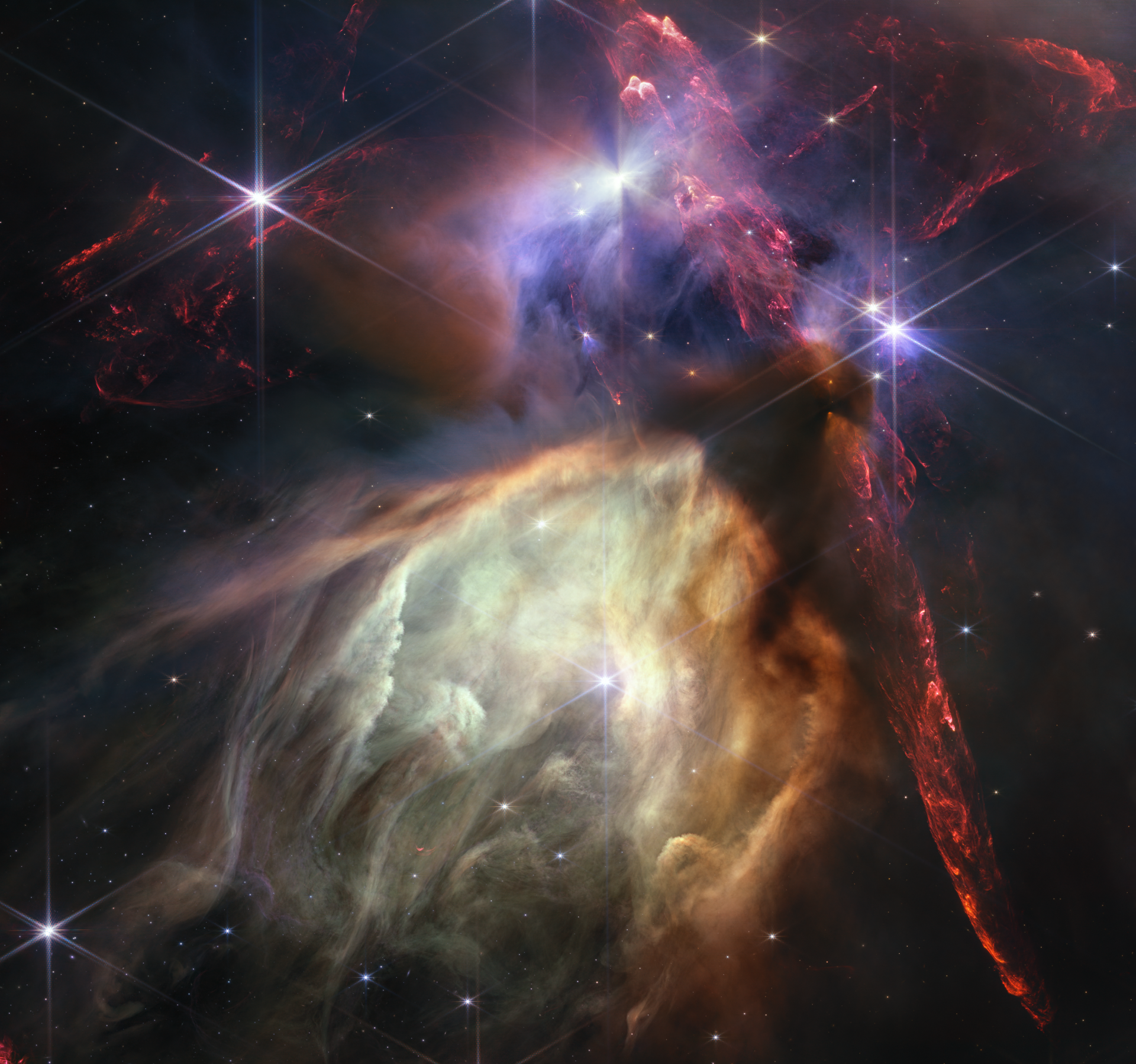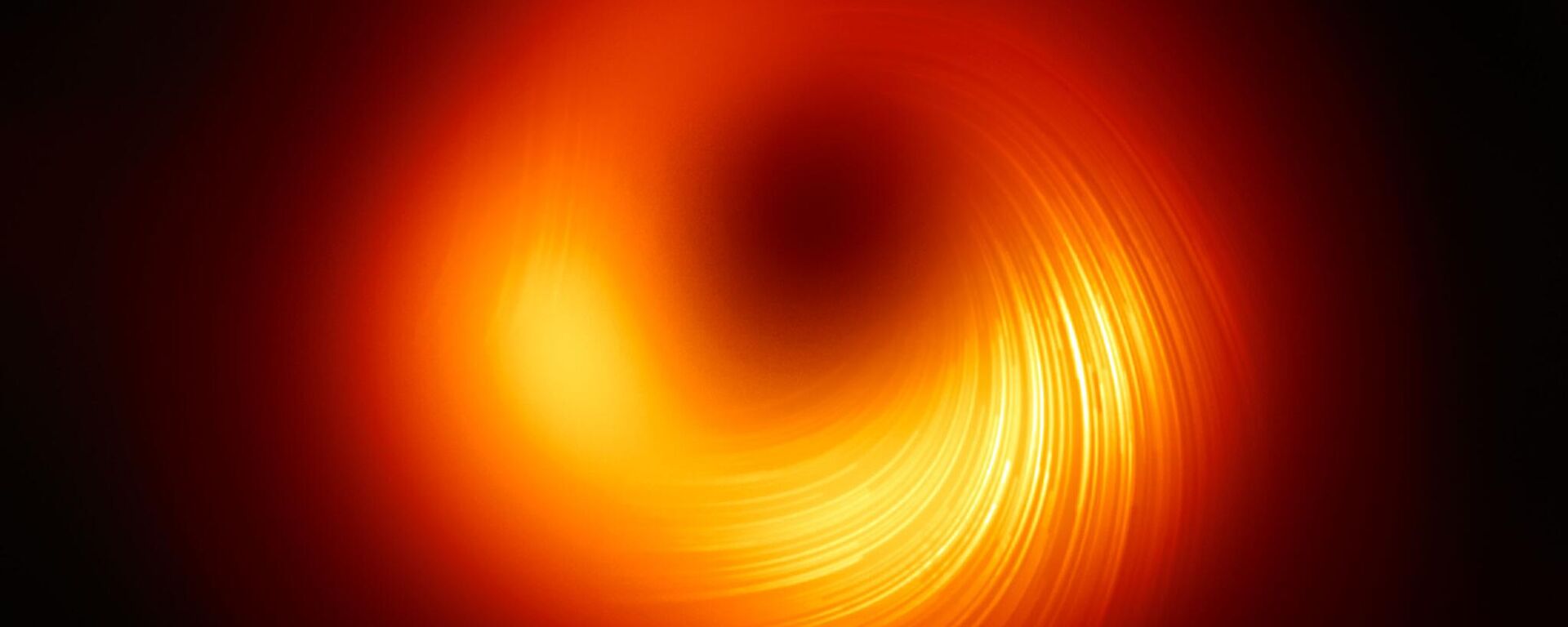Photo: NASA Drops Stunning New Space Image on Webb Telescope’s First Anniversary

© NASA GSFC/CIL/Adriana Manrique Gutierrez
Subscribe
One year after NASA published the first batch of photos from the new James Webb Space Telescope (JWST), the US space agency has released a stunning new image to celebrate the anniversary.
The subject of the photo is the Rho Ophiuchi cloud complex, the nearest stellar nursery to Earth at 390 light-years away. Some 50 young stars can be spotted among the billowing clouds of dust and gas, which shine in goldish-white, crimson red, and an eerie blue.
The full, high-definition image can be viewed here on NASA’s website.

The first anniversary image from NASA’s James Webb Space Telescope displays star birth like it’s never been seen before, full of detailed, impressionistic texture. The subject is the Rho Ophiuchi cloud complex, the closest star-forming region to Earth. It is a relatively small, quiet stellar nursery, but you’d never know it from Webb’s chaotic close-up. Jets bursting from young stars crisscross the image, impacting the surrounding interstellar gas and lighting up molecular hydrogen, shown in red. Some stars display the telltale shadow of a circumstellar disk, the makings of future planetary systems.
Surrounding some of the young stars are disk-like swirls, which are likely destined to condense into planetary systems as gravity slowly pulls the matter together into ever-larger clumps. In our own solar system, that process took some 600 million years after the Sun began fusing hydrogen into helium in its core and pouring out its light into the dark.
“On its first anniversary, the James Webb Space Telescope has already delivered upon its promise to unfold the universe, gifting humanity with a breathtaking treasure trove of images and science that will last for decades,” Nicola Fox, associate administrator of NASA’s Science Mission Directorate in Washington, said in a statement.
“An engineering marvel built by the world’s leading scientists and engineers, Webb has given us a more intricate understanding of galaxies, stars, and the atmospheres of planets outside of our solar system than ever before, laying the groundwork for NASA to lead the world in a new era of scientific discovery and the search for habitable worlds,” Fox added.
The JWST, which sits at a unique point of gravitational equilibrium in Earth orbit called a Lagrangian Point, was first conceived of in the late 1980s as the successor to the Hubble Space Telescope, which at that point had not even launched yet. However, the project was repeatedly delayed, and Hubble significantly outperformed its expectations, leading to $10 billion being spent on getting JWST perfect. It was finally launched in the final days of 2021 and arrived at its present location in early 2022, where it began the slow process of unfolding, deploying its massive mirror apparatus, and calibrating itself for its mission.
“The telescope is working better than we could have possibly hoped for,” said Jane Rigby, a NASA astrophysicist and senior project scientist for the JWST.
The Webb Telescope is the biggest space telescope humans have ever built, several times the size of the Hubble, and its comparatively distant location far from Earth (1 million miles away compared to the 332 miles up for the Hubble) mean it has unparalleled views deep into the universe.
Because nothing travels faster than the speed of light, the more distant you look into space, the further back in time you can see. The JWST is capable of seeing so far away that it can view objects formed only several hundred million years after the Big Bang gave birth to the universe itself, about 13.6 billion years ago. Recently, scientists using the telescope spotted a supermassive black hole and several galaxies that formed within 600 million years of the Big Bang, when astronomers didn’t think such objects were capable of forming yet.
However, its powerful lens has also been turned on much closer objects, showing detailed images of the planets and moons within our own solar system.




